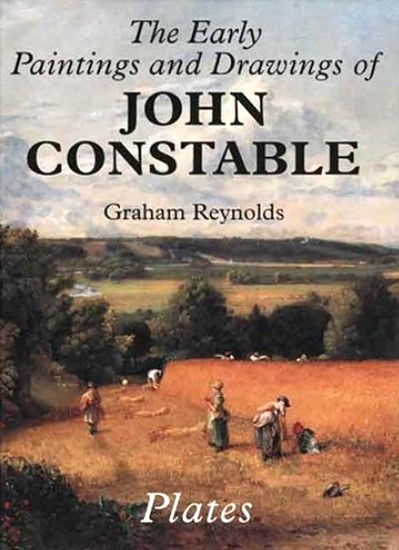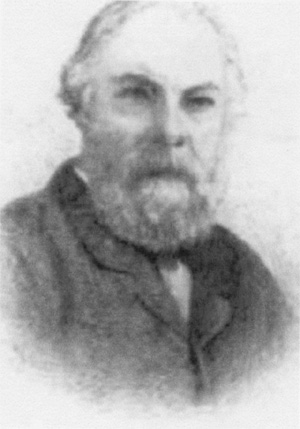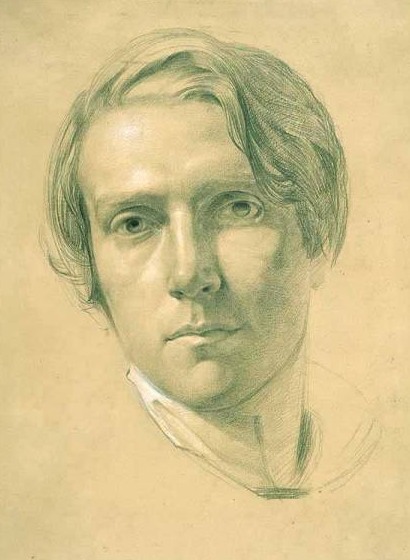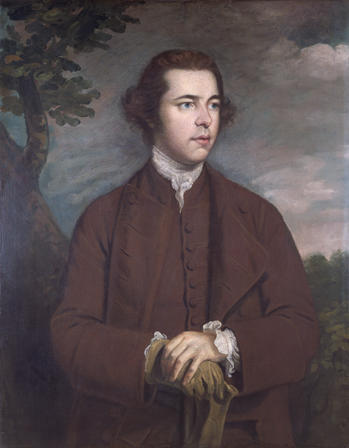|
Paul Oppé
Adolph Paul Oppé, (22 September 1878 – 29 March 1957) was a British art historian, critic, art collector and museum official. Born in London, the son of a silk merchant, he was educated at Charterhouse, the University of St Andrews, and New College, Oxford. From 1902–5 he taught Greek and ancient history at the universities of St Andrews and Edinburgh, and from 1905–38 worked as a civil servant in the Board of Education. He also served (1906–7 and 1910–13) as Deputy Director of the Victoria & Albert Museum. Oppé was elected as a Fellow of the British Academy in 1952. Oppé was a distinguished collector of drawings, and monographs on Raphael and Botticelli, but subsequently concentrated on British art, particularly works on paper including those by William Hogarth, Alexander Cozens, John Robert Cozens, and Thomas Rowlandson, and wrote important catalogues on the English drawings in the Royal Collection at Windsor including those by Paul and Thomas Sandby. He was a pio ... [...More Info...] [...Related Items...] OR: [Wikipedia] [Google] [Baidu] |
National Portrait Gallery, London
The National Portrait Gallery (NPG) is an art gallery in London housing a collection of portraits of historically important and famous British people. It was arguably the first national public gallery dedicated to portraits in the world when it opened in 1856. The gallery moved in 1896 to its current site at St Martin's Place, off Trafalgar Square, and adjoining the National Gallery (London), National Gallery. It has been expanded twice since then. The National Portrait Gallery also has regional outposts at Beningbrough Hall in Yorkshire and Montacute House in Somerset. It is unconnected to the Scottish National Portrait Gallery in Edinburgh, with which its remit overlaps. The gallery is a non-departmental public body sponsored by the Department for Digital, Culture, Media and Sport. Collection The gallery houses portraits of historically important and famous British people, selected on the basis of the significance of the sitter, not that of the artist. The collection includes ... [...More Info...] [...Related Items...] OR: [Wikipedia] [Google] [Baidu] |
Royal Collection
The Royal Collection of the British royal family is the largest private art collection in the world. Spread among 13 occupied and historic royal residences in the United Kingdom, the collection is owned by King Charles III and overseen by the Royal Collection Trust. The British monarch owns some of the collection in right of the Crown and some as a private individual. It is made up of over one million objects, including 7,000 paintings, over 150,000 works on paper, this including 30,000 watercolours and drawings, and about 450,000 photographs, as well as around 700,000 works of art, including tapestries, furniture, ceramics, textiles, carriages, weapons, armour, jewellery, clocks, musical instruments, tableware, plants, manuscripts, books, and sculptures. Some of the buildings which house the collection, such as Hampton Court Palace, are open to the public and not lived in by the Royal Family, whilst others, such as Windsor Castle and Kensington Palace, are both residences an ... [...More Info...] [...Related Items...] OR: [Wikipedia] [Google] [Baidu] |
Catalogue Raisonné
A ''catalogue raisonné'' (or critical catalogue) is a comprehensive, annotated listing of all the known artworks by an artist either in a particular medium or all media. The works are described in such a way that they may be reliably identified by third parties, and such listings play an important role in authentification. Etymology The term ''catalogue raisonné'' is French, meaning "reasoned catalogue"Catalogue raisonné , ''Online Merriam-Webster Dictionary''. (i.e. containing arguments for the information given, such as attributions), but is part of the of the English-speaking art world. The spelling is never Americanized to "catalog", even ... [...More Info...] [...Related Items...] OR: [Wikipedia] [Google] [Baidu] |
John William Inchbold
John William Inchbold (29 August 1830 – 23 January 1888) was an English painter who was born in Leeds, Yorkshire. His style was influenced by the Pre-Raphaelite Brotherhood. He was the son of a Yorkshire newspaper owner, Thomas Inchbold. Biography Inchbold was born 29 April 1830 at Leeds, Yorkshire, where his father, Thomas Inchbold, was the proprietor and editor of the ''Leeds Intelligencer''. Having shown an early talent for drawing he moved to London and became a draughtsman in the lithographic works of Day and Haghe.Dictionary of National Biography Entry, Volume 28, page 426, In public domain, accessed on-line on 27 February 2009 Inchbold became a pupil of Louis Haghe, the water-colour painter, and was a student at the Royal Academy in 1847. He exhibited at the Society of British Artists in 1849, at the Academy from 1851. At first he worked in watercolour in a free style, but his first exhibited oil painting, shown at the Academy in 1852 showed the influence of the Pr ... [...More Info...] [...Related Items...] OR: [Wikipedia] [Google] [Baidu] |
George Richmond (painter)
George Richmond (28 March 1809 – 19 March 1896) was an English painter and portraitist. In his youth he was a member of The Ancients, a group of followers of William Blake. Later in life he established a career as a portrait painter, which included painting the portraits of the British gentry, nobility and royalty. He was the son of Thomas Richmond, miniature-painter, and was the father of the painter William Blake Richmond as well as the grandfather of the naval historian, Admiral Sir Herbert Richmond. A keen follower of cricket, Richmond was noted in one obituary as having been "an habitué of Lord's since 1816". Life Early life George was born at Brompton, then a country village, on 28 March 1809. His mother, Ann Richmond, came of an Essex family named Oram, and was a woman of great beauty and force of character. His brother Thomas Richmond was also a portrait artist. One of his earliest recollections was the sight of the lifeguards marching to the cavalry barra ... [...More Info...] [...Related Items...] OR: [Wikipedia] [Google] [Baidu] |
John Sell Cotman
John Sell Cotman (16 May 1782 – 24 July 1842) was an English marine and landscape painter, etcher, illustrator, author and a leading member of the Norwich School of painters. Born in Norwich, the son of a silk merchant and lace dealer, Cotman was educated at the Norwich Grammar School. He showed an early talent for art. It was intended that he followed his father into the family business but, intent on a career in art, he moved to London in 1798, where he met artists such as J. M. W. Turner, Peter de Wint and Thomas Girtin, whose sketching club he joined, and whom he travelled with to Wales and Surrey. By 1800 he was exhibiting at the Royal Academy, showing scenes of the Welsh countryside there in 1801 and 1802. His drawing expeditions took him throughout southern Britain, and to Yorkshire, where he stayed with the Cholmeley family during the three summers of 1803–5. His sons Miles Edmund and John Joseph Cotman became notable painters in their own right. Life Early yea ... [...More Info...] [...Related Items...] OR: [Wikipedia] [Google] [Baidu] |
John Constable
John Constable (; 11 June 1776 – 31 March 1837) was an English landscape painter in the Romanticism, Romantic tradition. Born in Suffolk, he is known principally for revolutionising the genre of landscape painting with his pictures of Dedham Vale, the area surrounding his home – now known as "Constable Country" – which he invested with an intensity of affection. "I should paint my own places best", he wrote to his friend John Fisher in 1821, "painting is but another word for feeling". Constable's most famous paintings include ''Wivenhoe Park (painting), Wivenhoe Park'' (1816), ''The Vale of Dedham (painting), Dedham Vale'' (1821) and ''The Hay Wain'' (1821). Although his paintings are now among the most popular and valuable in Art of the United Kingdom, British art, he was never financially successful. He became a member of the establishment after he was elected to the Royal Academy of Arts at the age of 52. His work was embraced in France, where he sold more than in his ... [...More Info...] [...Related Items...] OR: [Wikipedia] [Google] [Baidu] |
Thomas Jones (artist)
Thomas Jones (26 September 1742 – 29 April 1803) was a Welsh landscape painter. He was a pupil of Richard Wilson and was best known in his lifetime as a painter of Welsh and Italian landscapes in the style of his master. However, Jones's reputation grew in the 20th century when more unconventional works by him, not originally intended for exhibition, came to light. Most notable among these is a series of views of Naples which he painted from 1782 to 1783. By breaking with the conventions of classical landscape painting in favour of direct observation, they look forward to the work of Camille Corot and the Barbizon School in the 19th century.Chilvers, Ian, ''The Oxford Concise Dictionary of Art and Artists''. Oxford: Oxford University Press, 2003 His autobiography, ''Memoirs of Thomas Jones of Penkerrig'', went unpublished until 1951 but is now recognised as an important source of information on the 18th-century art world.Sumner, Ann, "Who was Thomas Jones? The life, death and ... [...More Info...] [...Related Items...] OR: [Wikipedia] [Google] [Baidu] |
Francis Towne
Francis Towne (1739 or 1740 – 7 July 1816) was a British watercolour painter of landscapes that range from the English Lake District to Naples and Rome. After a long period of obscurity, his work has been increasingly recognised from the early 20th century onwards. Biography Towne was born in Isleworth in Middlesex, the son of a corn chandler. In 1752 he was apprenticed to a leading coach painter in London, Thomas Brookshead. In 1759 he won a design prize from the Society of Arts, and studied for a while at St Martin’s Lane Academy; according to his pupil John White Abbott many years later, around this time he also studied under the court portraitist John Shackleton. In 1763 Towne was employed by a coach painter called Thomas Watson in Long Acre, and went to Exeter on business, where he soon settled. He had already begun painting in oils and also taught drawing, and now he began to accept commissions from wealthy families in Devon. After a tour of north Wales ... [...More Info...] [...Related Items...] OR: [Wikipedia] [Google] [Baidu] |
John Downman
John Downman (1750 – 24 December 1824) was a Welsh portrait and subject painter. Life and work Downman is thought to have been born near Ruabon, Denbighshire, the son of Francis Downman, attorney, of St Neots, and Charlotte (née Goodsend, eldest daughter of the private secretary to George I); his grandfather, Hugh Downman (1672–1729), had been the master of the House of Ordnance at Sheerness. The Downman family is usually known as a Devonshire one, but the exact connexion between the artist and the Devonshire branch has not been traced. He was educated first at Chester, then at Liverpool, and finally at the Royal Academy schools, and was for a while in the studio of Benjamin West. Downman set off in 1773 with Joseph Wright of Derby, a pregnant Ann Wright and Richard Hurleston for Italy. Their ship took shelter for three weeks in Nice before they completed their outward voyage in Livorno in Italy in February 1774. Downman returned to Britain in 1775.Jane Munro, 'Downman, J ... [...More Info...] [...Related Items...] OR: [Wikipedia] [Google] [Baidu] |
Tate Gallery
Tate is an institution that houses, in a network of four art galleries, the United Kingdom's national collection of British art, and international modern and contemporary art. It is not a government institution, but its main sponsor is the UK Department for Digital, Culture, Media and Sport. The name "Tate" is used also as the operating name for the corporate body, which was established by the Museums and Galleries Act 1992 as "The Board of Trustees of the Tate Gallery". The gallery was founded in 1897 as the National Gallery of British Art. When its role was changed to include the national collection of modern art as well as the national collection of British art, in 1932, it was renamed the Tate Gallery after sugar magnate Henry Tate of Tate & Lyle, who had laid the foundations for the collection. The Tate Gallery was housed in the current building occupied by Tate Britain, which is situated in Millbank, London. In 2000, the Tate Gallery transformed itself into the curre ... [...More Info...] [...Related Items...] OR: [Wikipedia] [Google] [Baidu] |
Sir Charles Wheeler
Sir Selwyn Charles Cornelius-Wheeler (26 March 1923 – 4 July 2008) was a British journalist and broadcaster. Having joined the BBC in 1947, he became the corporation's longest-serving foreign correspondent, remaining in the role until his death. Wheeler also had spells as presenter of several BBC current affairs television programmes including ''Newsnight'' and '' Panorama''. Early life Wheeler was born in Bremen, Germany, in 1923, to Winifred Agnes (née Rees) and Charles Cornelius-Wheeler. The family later moved to Hamburg, where his father was an agent for a shipping company. Educated at the Cranbrook School in Kent, his first job was as an errand boy at the '' Daily Sketch'' newspaper at the age of 17. He enlisted in the Royal Marines in 1942, rising to the rank of captain. As part of 30 Assault Unit, a secret naval intelligence unit assembled by Ian Fleming, he participated in the Normandy landings as second-in-command to Patrick Dalzel-Job. Career After leaving ... [...More Info...] [...Related Items...] OR: [Wikipedia] [Google] [Baidu] |

.png)



.jpg)



_(2).jpg)